<< Previous | Displaying results 201-250 of 1298 for "nazi germany" | Next >>
A notice reads "Business closed by the police due to profiteering. Owner in protective custody at Dachau." Signed by police chief Heinrich Himmler. Munich, Germany, April or May 1933.
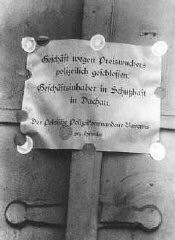
A view of the double row of barbed-wire fences that surrounded the Ohrdruf camp, a subcamp in the Buchenwald camp system. Ohrdruf, Germany, April 1945.
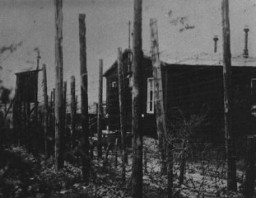
Adolf Hitler, Wilhelm Frick, and Hermann Göring wave to a torchlight parade in honor of Hitler's appointment as chancellor. Behind Göring stands Rudolf Hess. Berlin, Germany, January 30, 1933.

Dome of the Reichstag (German parliament) building, damaged by fire on February 27, 1933. Hitler used the arson to convince President Hindenburg to declare a state of emergency, suspending constitutional safeguards. Berlin, Germany, 1933.
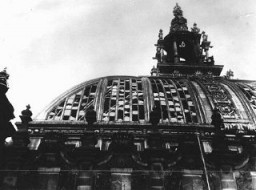
Fire brigade arrives at the Reichstag (German parliament) building. Despite fire-fighting efforts, the building was virtually destroyed by fires set at several places in the building. Berlin, Germany, February 27, 1933.

Firemen in the Reichstag (German parliament) building after it was damaged by arson. Berlin, Germany, February 27, 1933.
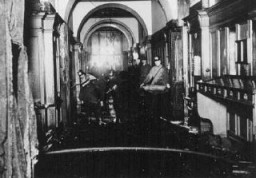
Poster: "Greater Germany: Yes on 10 April" (1938). This election poster emphasizes the message of jumping on the Nazi political bandwagon, as represented by the hands raised in a unified Nazi salute. Nazi propaganda frequently stressed the power of a mass movement to propel the country forward, subtly underscored by the upward angle of the hands. This poster typifies the propaganda strategy of using simple confident slogans, with bold graphics often using the characteristic Nazi colors of red, black, and…
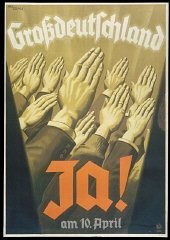
Germans cheer Adolf Hitler as he leaves the Hotel Kaiserhof just after being sworn in as chancellor. Berlin, Germany, January 30, 1933.
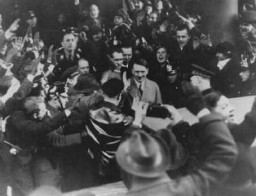
Reich President Paul von Hindenburg poses with Chancellor Adolf Hitler. Hindenburg appointed Hitler chancellor on January 30, 1933. Germany, 1933-1934.
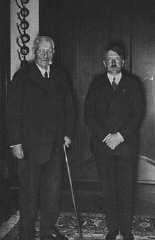
Adolf Hitler addresses an SA rally. Dortmund, Germany, 1933.
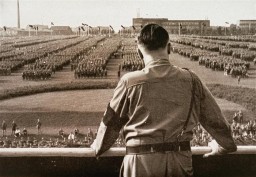
November 9, 1938. On this date, the Nazi regime coordinated a wave of antisemitic violence in Nazi Germany. This became known as Kristallnacht or the "Night of Broken Glass."

March 22, 1933. On this date, the SS established the Dachau concentration camp in Germany.
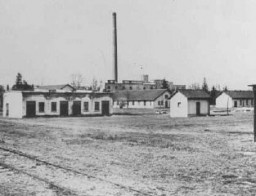
February 28, 1933. On this date, President Hindenburg issued the Decree for the Protection of People and the Reich, also known as the Reichstag Fire Decree.
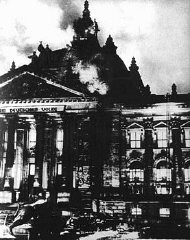
November 24, 1933. On this date, the German government issued the Law against the Dangerous Habitual Criminals, allowing indefinite imprisonment.
August 2, 1934. On this date, Adolf Hitler became President of Germany after Paul von Hindenburg's death.

In the auditorium of the Propaganda Ministry and Public Enlightenment, Nazi Propaganda Minister Joseph Goebbels delivers a speech to his deputies for the press and arts. Berlin, Germany, November 1936.
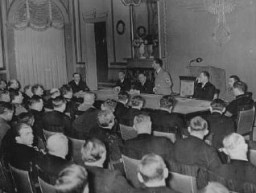
Nazi foreign minister Joachim von Ribbentrop (left), Soviet leader Joseph Stalin (center), and Soviet foreign minister Viacheslav Molotov (right) at the signing of the nonaggression pact between Germany and the Soviet Union. Moscow, Soviet Union, August 1939.
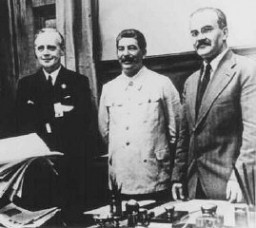
Under Adolf Hitler, the Nazi regime was responsible for the mass murder of 6 million Jews and millions of other victims. Learn about Hitler in the years 1924-1930.
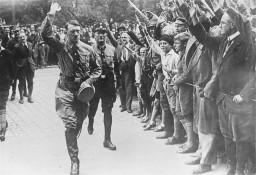
Karl Kautsky was a leading Marxist and Socialist theoretician in the Austrian Social Democratic movement. His books were burned in Nazi Germany in 1933. Learn more.
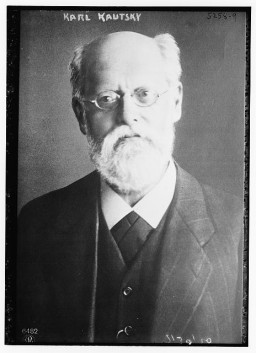
Hermann Ludwig Maas, a Protestant pastor in Heidelberg, Germany, was a rescuer and clergyman who stood in solidarity with the Jewish community.
Members of the German Africa Show (Deutsche Afrika-Schau), circa 1937 in Germany. Though these early shows were exploitative by nature, artists originally had the ability to shape their own performances and how they were represented. After the Nazis came to power in 1933, this agency began to disappear. During the Nazi era, working in such shows was an increasingly propaganda-driven, demoralizing, and unpleasant experience. Known persons in the photograph from left to right: Josef Boholle is the furthest…
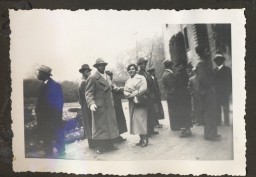
Adolf Hitler salutes a passing SS formation at the third Nazi Party Congress in 1927. Nuremberg, Germany, August 1927. The SS (Schutzstaffel, or Protection Squads) was originally established as Adolf Hitler’s personal bodyguard unit. It would later become both the elite guard of the Nazi Reich and Hitler’s executive force prepared to carry out all security-related duties, without regard for legal restraint.
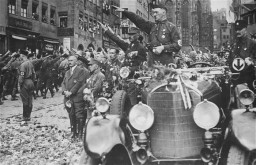
Party scene from the early 1940s in Germany. In the foreground is Deska Garber. Deska’s father was Joseph Garber, a Togolese man, and his mother was Johanna Maychrzak, a white German woman. The woman in the back left is Else Hummel, whom Deska would marry after the war. A small portrait of Adolf Hitler is visible on the wall in the background, something that would have been very common in German homes during the Nazi era.

Under Adolf Hitler's leadership, the Nazi regime was responsible for the mass murder of 6 million Jews and millions of other victims. Learn about Hitler in the years 1930-1933.
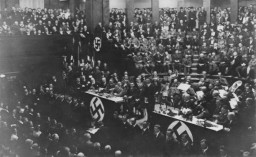
Karl Höcker’s album shows SS officers at events ranging from ceremonies to social gatherings, in stark contrast to other photographs from Auschwitz. Learn more.
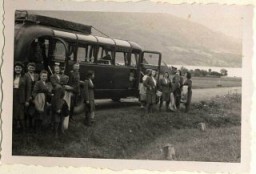
Werner was raised in the rural German town of Herleshausen, where his family owned a farming supply business. His father sold seeds to local farmers and purchased their grain, while his mother ran the office. After several years of public schooling in Herleshausen, Werner began attending a high school in Eisenach, some 12 miles from their home. The Katzensteins were one of about two dozen Jewish families living in the area. 1933–39: When the Nazis came to power in January 1933, the Katzensteins' lives…
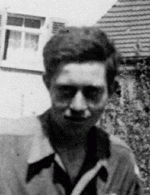
Settchen was one of three children born to a religious Jewish family in a small town in the German state of Hessen. Her father was a cantor and kosher butcher. Settchen completed grade school during the 1880s. Because of a digestive disease, Settchen was largely homebound. She never married, and lived with her younger sister and brother-in-law. 1933-39: Reichenbach was a quiet town. Its largely Protestant inhabitants were generally not antisemitic. After Hitler came to power in 1933, the Nazis staged…

Learn about photographs contained in Karl Höcker’s album depicting official visits, ceremonies, and the social activities of the Auschwitz camp staff.
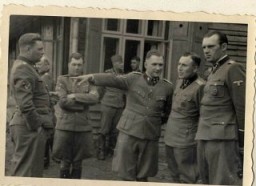
Learn about the Freiburg subcamp of Flossenbürg, including its establishment, prisoner population, and conditions there.
In April 1945, US troops encountered a barn on the outskirts of Gardelegen where the SS and its accomplices had massacred over 1,000 concentration camp prisoners.
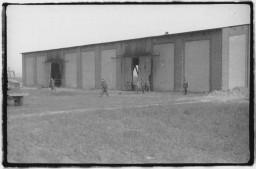
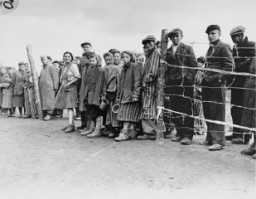
Adolf Eichmann, a pivotal figure in the implementation of the “Final Solution,” was put on trial in Jerusalem, Israel, in 1961. Learn about the trial and its legacies.
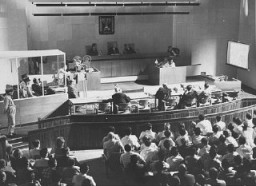
Eduard Schulte was a prominent German industrialist and secret anti-Nazi who leaked the first report to the west that the Nazis intended to murder all Jews in Europe.
Learn more about Bremen-Farge, a subcamp of Neuengamme where the majority of prisoners were used to construct an underground U-boat shipyard for the German navy.
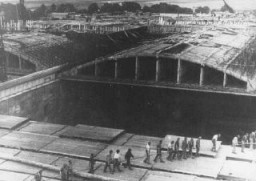
During the Weimar Republic (1919-1933), eugenics gained popularity in Germany. Learn more about the pseudoscience of “racial hygiene.”
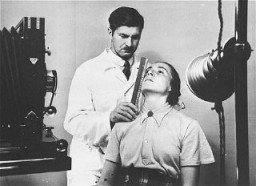
The July 20, 1944, plot was a failed attempt to assassinate Adolf Hitler. Learn more about the July 20 plot, including some of the motivations of the participants.
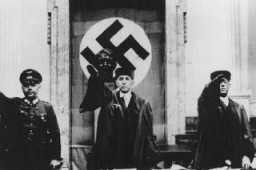
Learn more about the plight of Jewish refugees who attempted to escape Germany between 1933 and 1939.

To implement their policies, the Nazis had help from individuals across Europe, including professionals in many fields. Learn about the role of the German police.
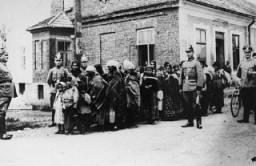
Adolf Eichmann was a key figure in implementing the “Final Solution,” the Nazi plan to kill Europe's Jews. Learn more through key dates and events.

The Ohrdruf camp was a subcamp of the Buchenwald concentration camp, and the first Nazi camp liberated by US troops.
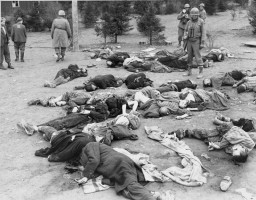
Joseph Goebbels, Nazi politician, propagandist, and radical antisemite, was Reich Minister for Propaganda and Public Enlightenment from 1933 until 1945.
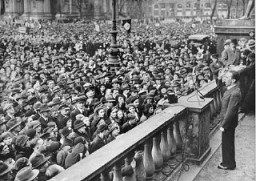
Börgermoor was part of the Nazi regime’s early system of concentration camps. It was located in the Emsland region of Prussia.
The SS established the Mühldorf camp complex in mid-1944 as a satellite system of Dachau to provide labor for the production of the Messerschmitt 262 jet fighter.

The Mauthausen concentration camp was established following the Nazi incorporation of Austria in 1938. Learn about the harsh conditions in the camp.
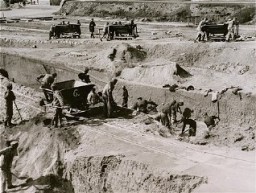
By September 1939, over half of German Jews had emigrated. WWII would accelerate the persecution, deportation, and later, mass murder, of the remainder of Germany's Jews.
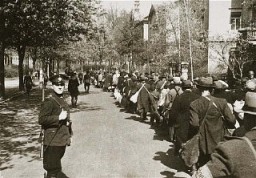
German General Erich Ludendorff was a key proponent of the fictitious “Stab-in-the-Back” myth which blamed Jews and others for Germany’s defeat in WWI.
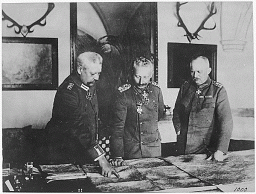
Explore Frank Liebermann’s biography and learn about his experiences of antisemitism in his home town in Germany before World War II.
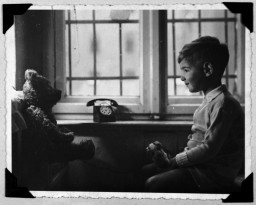
Beginning in the 1920s, Adolf Hitler and the Nazi Party emphasized their desire to create a Volksgemeinschaft (People’s or National Community) based on the foundations of race, ethnicity, and social behavior. Once in power, the Nazis aimed to shape a Volksgemeinschaft according to their ideological goals. Test
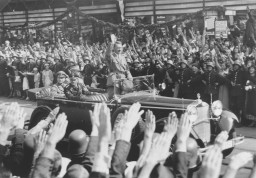
Charged with managing the mass deportation of Jews to ghettos and killing centers, Adolf Eichmann was a key figure in the "Final Solution."
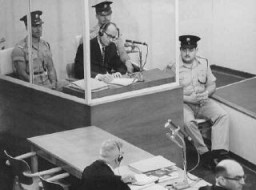
This film excerpt from Groß-Stadt Zigeuner (1932) by filmmaker László Moholy-Nagy shows a Romani (Gypsy) campsite near Berlin, Germany, in the last year of the Weimar Republic. Although Roma (Gypsies) had faced persecution in Germany even before the Nazi rise to power in 1933, the Nazis regarded them as racial enemies to be identified and killed. Tens of thousands of Roma were killed by the Einsatzgruppen in eastern Europe or were deported to killing centers in occupied Poland.
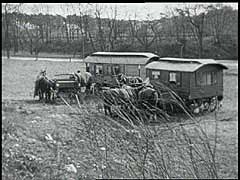
We would like to thank Crown Family Philanthropies, Abe and Ida Cooper Foundation, the Claims Conference, EVZ, and BMF for supporting the ongoing work to create content and resources for the Holocaust Encyclopedia. View the list of donor acknowledgement.